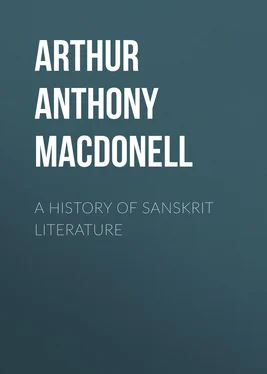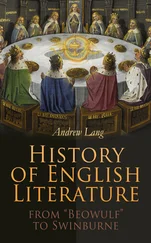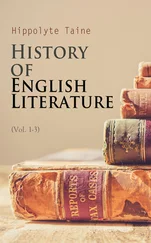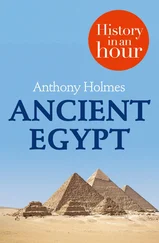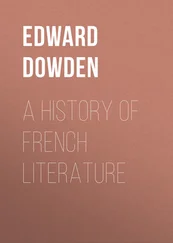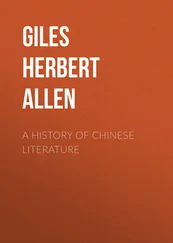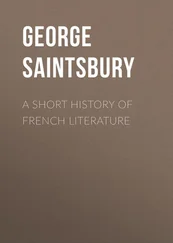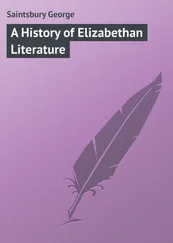Arthur Anthony MacDonell - A History of Sanskrit Literature
Здесь есть возможность читать онлайн «Arthur Anthony MacDonell - A History of Sanskrit Literature» — ознакомительный отрывок электронной книги совершенно бесплатно, а после прочтения отрывка купить полную версию. В некоторых случаях можно слушать аудио, скачать через торрент в формате fb2 и присутствует краткое содержание. Жанр: foreign_prose, foreign_antique, на английском языке. Описание произведения, (предисловие) а так же отзывы посетителей доступны на портале библиотеки ЛибКат.
- Название:A History of Sanskrit Literature
- Автор:
- Жанр:
- Год:неизвестен
- ISBN:нет данных
- Рейтинг книги:5 / 5. Голосов: 1
-
Избранное:Добавить в избранное
- Отзывы:
-
Ваша оценка:
- 100
- 1
- 2
- 3
- 4
- 5
A History of Sanskrit Literature: краткое содержание, описание и аннотация
Предлагаем к чтению аннотацию, описание, краткое содержание или предисловие (зависит от того, что написал сам автор книги «A History of Sanskrit Literature»). Если вы не нашли необходимую информацию о книге — напишите в комментариях, мы постараемся отыскать её.
A History of Sanskrit Literature — читать онлайн ознакомительный отрывок
Ниже представлен текст книги, разбитый по страницам. Система сохранения места последней прочитанной страницы, позволяет с удобством читать онлайн бесплатно книгу «A History of Sanskrit Literature», без необходимости каждый раз заново искать на чём Вы остановились. Поставьте закладку, и сможете в любой момент перейти на страницу, на которой закончили чтение.
Интервал:
Закладка:
It is to be noted that the Vedic metres have a certain elasticity to which we are unaccustomed in Greek prosody, and which recalls the irregularities of the Latin Saturnian verse. Only the rhythm of the last four or five syllables is determined, the first part of the line not being subject to rule. Regarded in their historical connection, the Vedic metres, which are the foundation of the entire prosody of the later literature, occupy a position midway between the system of the Indo-Iranian period and that of classical Sanskrit. For the evidence of the Avesta, with its eight and eleven syllable lines, which ignore quantity, but are combined into stanzas otherwise the same as those of the Rigveda , indicates that the metrical practice of the period when Persians and Indians were still one people, depended on no other principle than the counting of syllables. In the Sanskrit period, on the other hand, the quantity of every syllable in the line was determined in all metres, with the sole exception of the loose measure (called çloka ) employed in epic poetry. The metrical regulation of the line, starting from its end, thus finally extended to the whole. The fixed rhythm at the end of the Vedic line is called vṛitta , literally “turn” (from vṛit , Lat. vert-ere ), which corresponds etymologically to the Latin versus .
The eight-syllable line usually ends in two iambics, the first four syllables, though not exactly determined, having a tendency to be iambic also. This verse is therefore the almost exact equivalent of the Greek iambic dimeter.
Three of these lines combine to form the gāyatrī metre, in which nearly one-fourth (2450) of the total number of stanzas in the Rigveda is composed. An example of it is the first stanza of the Rigveda , which runs as follows:—
Agním īle puróhitaṃ
Yajnásya devám ṛitvíjaṃ
Hótāraṃ ratnadhā́tamam.
It may be closely rendered thus in lines imitating the rhythm of the original:—
I praise Agni, domestic priest,
God, minister of sacrifice,
Herald, most prodigal of wealth.
Four of these eight-syllable lines combine to form the anushṭubh stanza, in which the first two and the last two are more closely connected. In the Rigveda the number of stanzas in this measure amounts to only about one-third of those in the gāyatrī . This relation is gradually reversed, till we reach the post-Vedic period, when the gāyatrī is found to have disappeared, and the anushṭubh (now generally called çloka ) to have become the predominant measure of Sanskrit poetry. A development in the character of this metre may be observed within the Rigveda itself. All its verses in the oldest hymns are the same, being iambic in rhythm. In later hymns, however, a tendency to differentiate the first and third from the second and fourth lines, by making the former non-iambic, begins to show itself. Finally, in the latest hymns of the tenth book the prevalence of the iambic rhythm disappears in the odd lines. Here every possible combination of quantity in the last four syllables is found, but the commonest variation, nearly equalling the iambic in frequency, is [short][long][long][shortlong]. The latter is the regular ending of the first and third line in the post-Vedic çloka .
The twelve-syllable line ends thus: [long][short][long][short][short]. Four of these together form the jagatī stanza. The trishṭubh stanza consists of four lines of eleven syllables, which are practically catalectic jagatīs , as they end [long][short][long][shortlong]. These two verses being so closely allied and having the same cadence, are often found mixed in the same stanza. The trishṭubh is by far the commonest metre, about two-fifths of the Rigveda being composed in it.
Speaking generally, a hymn of the Rigveda consists entirely of stanzas in the same metre. The regular and typical deviation from this rule is to conclude a hymn with a single stanza in a metre different from that of the rest, this being a natural method of distinctly marking its close.
A certain number of hymns of the Rigveda consist not merely of a succession of single stanzas, but of equal groups of stanzas. The group consists either of three stanzas in the same simple metre, generally gāyatrī , or of the combination of two stanzas in different mixed metres. The latter strophic type goes by the name of Pragātha , and is found chiefly in the eighth book of the Rigveda .
Chapter IV
Poetry of the Rigveda
Before we turn to describe the world of thought revealed in the hymns of the Rigveda , the question may naturally be asked, to what extent is it possible to understand the true meaning of a book occupying so isolated a position in the remotest age of Indian literature? The answer to this question depends on the recognition of the right method of interpretation applicable to that ancient body of poetry. When the Rigveda first became known, European scholars, as yet only acquainted with the language and literature of classical Sanskrit, found that the Vedic hymns were composed in an ancient dialect and embodied a world of ideas far removed from that with which they had made themselves familiar. The interpretation of these hymns was therefore at the outset barred by almost insurmountable difficulties. Fortunately, however, a voluminous commentary on the Rigveda , which explains or paraphrases every word of its hymns, was found to exist. This was the work of the great Vedic scholar Sāyaṇa, who lived in the latter half of the fourteenth century A.D. at Vijayanagara (“City of Victory”), the ruins of which lie near Bellary in Southern India. As his commentary constantly referred to ancient authorities, it was thought to have preserved the true meaning of the Rigveda in a traditional interpretation going back to the most ancient times. Nothing further seemed to be necessary than to ascertain the explanation of the original text which prevailed in India five centuries ago, and is laid down in Sāyaṇa’s work. This view is represented by the translation of the Rigveda begun in 1850 by H. H. Wilson, the first professor of Sanskrit at Oxford.
Another line was taken by the late Professor Roth, the founder of Vedic philology. This great scholar propounded the view that the aim of Vedic interpretation was not to ascertain the meaning which Sāyaṇa, or even Yāska, who lived eighteen centuries earlier, attributed to the Vedic hymns, but the meaning which the ancient poets themselves intended. Such an end could not be attained by simply following the lead of the commentators. For the latter, though valuable guides towards the understanding of the later theological and ritual literature, with the notions and practice of which they were familiar, showed no continuity of tradition from the time of the poets; for the tradition supplied by them was solely that which was handed down among interpreters, and only began when the meaning of the hymns was no longer fully comprehended. There could, in fact, be no other tradition; interpretation only arising when the hymns had become obscure. The commentators, therefore, simply preserved attempts at the solution of difficulties, while showing a distinct tendency towards misinterpreting the language as well as the religious, mythological, and cosmical ideas of a vanished age by the scholastic notions prevalent in their own.
It is clear from what Yāska says that some important discrepancies in opinion prevailed among the older expositors and the different schools of interpretation which flourished before his time. He gives the names of no fewer than seventeen predecessors, whose explanations of the Veda are often conflicting. Thus one of them interprets the word Nāsatyau , an epithet of the Vedic Dioskouroi, as “true, not false;” another takes it to mean “leaders of truth,” while Yāska himself thinks it might mean “nose-born”! The gap between the poets and the early interpreters was indeed so great that one of Yāska’s predecessors, named Kautsa, actually had the audacity to assert that the science of Vedic exposition was useless, as the Vedic hymns and formulas were obscure, unmeaning, or mutually contradictory. Such criticisms Yāska meets by replying that it was not the fault of the rafter if the blind man did not see it. Yāska himself interprets only a very small portion of the hymns of the Rigveda . In what he does attempt to explain, he largely depends on etymological considerations for the sense he assigns. He often gives two or more alternative or optional senses to the same word. The fact that he offers a choice of meanings shows that he had no earlier authority for his guide, and that his renderings are simply conjectural; for no one can suppose that the authors of the hymns had more than one meaning in their minds.
Читать дальшеИнтервал:
Закладка:
Похожие книги на «A History of Sanskrit Literature»
Представляем Вашему вниманию похожие книги на «A History of Sanskrit Literature» списком для выбора. Мы отобрали схожую по названию и смыслу литературу в надежде предоставить читателям больше вариантов отыскать новые, интересные, ещё непрочитанные произведения.
Обсуждение, отзывы о книге «A History of Sanskrit Literature» и просто собственные мнения читателей. Оставьте ваши комментарии, напишите, что Вы думаете о произведении, его смысле или главных героях. Укажите что конкретно понравилось, а что нет, и почему Вы так считаете.
